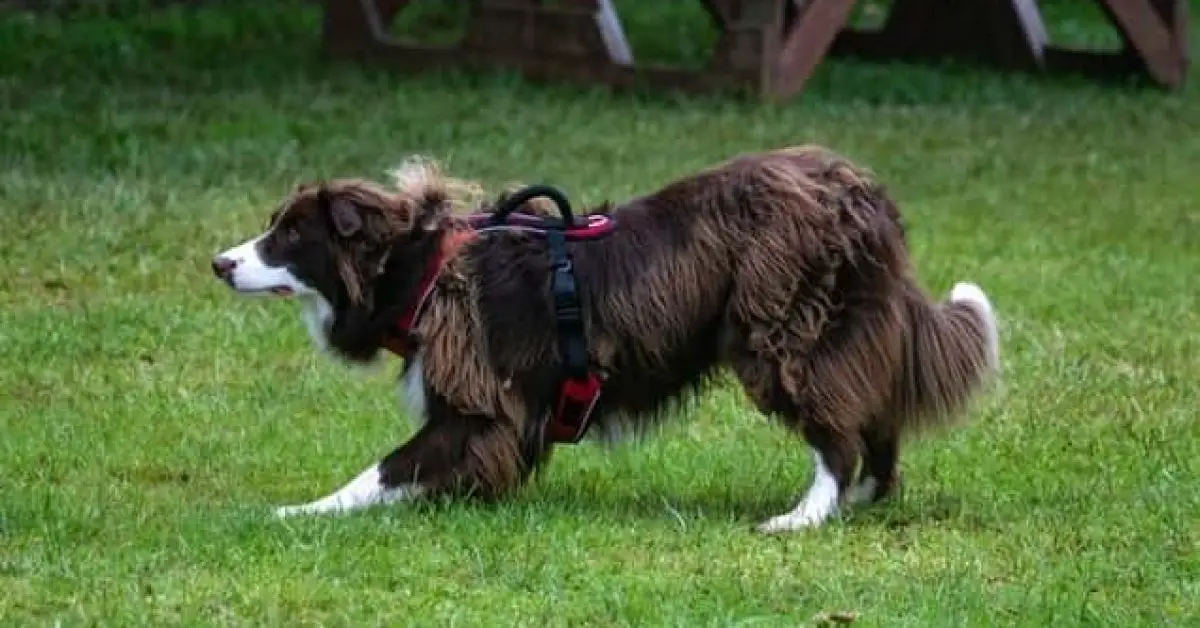WHY IS MY DOG YELPING AND SHAKING?

You may be asking yourself now “Why is my dog yelping and shaking?”. The situation can be frustrating and quite frankly scary to deal with. If you are not sure why your dog yelps when barely touched, trying to understand what is happening with your dog can be very worrisome.
Your dog yelping in pain, whether touched or not, is something which you need to find a solution to very quickly as it can easily turn into something much worse. Check your dog for any wound or injury and take into consideration any changes that may be occurring or have occurred in the environment around him or her.
Severe weather conditions, loud noises, etc. All this can make your dog yelp and shake. If their yelping and shaking are due to these things, then you can easily comfort them and ensure they return back to their normal self, especially after the situation has returned to normal. It is worth noting that severe weather conditions and loud noises can get most dogs agitated especially when it is strange to them.
If for some reason, your dog does not revert back to its normal behavior after things have gone back to normal, then you should consult with a professional, a dog trainer, vet doctor, Animal behaviorist, dog breeder, etc. All these people can provide the help your dog needs to come out of this situation.
Other than that, there are health-related conditions that can lead to your dog yelping and shaking. These are:
Generalized Tremor Syndrome (GTS)
Also known as GTS, white shaker dog syndrome or Shaker syndrome is a condition that gives a dog tremors in the head and body parts. The name white shaker dog syndrome came about as a result of the condition being common in small white breed dogs e.g the Maltese, West Highland White Terrier, and Poodle dog. This does not mean that other color types of the same breeds are free from the syndrome.
Dogs with GTS can be noticed to develop tremors during the early part of their adulthood. You will notice them yelping and shaking at random. Basic signs of these conditions are that the shaking and yelping would seem to follow a pattern or rhythm. It will look like involuntary muscle movements happening in a sequence.
This shaking and yelping or rhythmic motion may be at a single area of their body, for example, the dog’s head or all over their body. These tremors can range from mild to severe and each range can be worsened by exercise or excitement in the dog. If the dog is lucky, the tremors or shaking seize when they are resting or sleeping.
Currently, the cause of Generalized Tremor Syndrome is unknown and vet doctors only identify this syndrome through a process called ‘diagnosis of exclusion’. Simply put they check on and rule out or include a number of conditions before arriving at the conclusion of whether the dog has GTS or not. Depending on your dog’s condition the check can be extensive or simple.
A very common form of treatment for GTS is the use of prescribed steroids. Prednisone is a common one used and it works by suppressing the dog’s immune system thereby killing of the triggers to the yelping and shaking.
Normally, the effect of the treatment should be seen in a week or two by which time, your vet doctor would start reducing the dosage to the barest minimum. The aim is to wean them out of the dependency on the steroid which on its own if taken for a long time would have side effects on your dog like increased thirst, appetite and urination, bladder problems, and more. We are trying to summarize the situation here but the truth is that it is more complex than this.
The main thing here is to follow your vet doctor’s advice to the letter at all times.
Seizure Disorders
“Why is my dog shaking?” and it seems uncontrollable. Well, he or she may be having a seizure. When your dog yelps and shakes from seizure, they would look like they are treading on water and their shaking would seem uncontrollable. This can last for a few seconds to a few minutes.
It is usually advised not to touch your dog if you suspect their yelping and shaking is because of a seizure disorder. Some of the things that can lead to your dog having a seizure are liver disease, Anemia, Head Injuries, Electrolyte problems, Low or high blood sugar, Stroke, etc.
In addition to yelping and shaking other signs that your dog is experiencing a seizure are muscle twitching, loss of consciousness, foaming at the mouth, tongue chewing, and collapsing. Some dogs if they are standing when experiencing a seizure will look dazed, unsteady, and confused. They may even be temporarily blind at that moment. walking in circles and bumping into things.
So what do you do when your dog experiences a seizure. First thing is to remain calm, panicking with your dog would only make matters worse and someone might get hurt or bitten. Clear from the vicinity any piece of furniture around so that your dog will just have space all around. Do not try to touch your dog, especially the head or mouth area, instead, stay by your dog’s side and talk to them gently in order for them to calm down. If after some minutes your dog is not calm, he or she runs the risk of overheating, you can counter this by providing them cool water and applying it on their paws, or better still provide a fan and turn it on around them.
Keep on talking gently to your dog and most importantly, call your vet doctor for more directives. Your vet doctor would likely take into consideration the duration of the seizure and how often it occurs and prescribe the appropriate medication for you.
Always follow your vet’s instructions to the letter to avoid complications
Canine Distemper.
A highly contagious disease, canine distemper can lead to your dog yelping and shaking, it affects the dog’s skin, respiratory system, gastrointestinal system, and central nervous system. On average, it takes about 14 days for the symptoms of the disease to show.
Some of the symptoms together with the yelping and shaking are: Fever, Loss of appetite, Nasal discharge, Eye discharge, Lethargy, Coughing, Sneezing, Difficulty breathing, Vomiting, Diarrhea, Thickening of nose and footpads, Skin sores. This disease is caused by the paramyxovirus virus and dogs can get it from another infected animal or dog through their infected urine, blood, saliva, or respiratory droplets.
The best way to manage this disease is to get your dog vaccinated against it. Confirm your dog’s vaccination schedule with your nearest vet clinic. But if you have a situation where your dog is not vaccinated and has contacted the disease, the only thing to be done at this stage is to manage it. As of today, there is no known cure for the Canine Distemper.
The various ways in which your vet doctor might try to manage the situation are: Broad-spectrum antibiotics, Pain relievers, Seizure medications, Electrolytes, IV nutrition, Fever reducers, and Hospitalization.
If not treated early, it can leave serious damages on your dog like Nerve damage, Brain damage, and seizures.
Nausea.
Just like how people can act irrationally when nauseous, dogs too can act irrationally from nausea, yelping, and shaking in an uncoordinated manner under this condition. Nausea in dogs can occur as a result of bad medication. motion sickness, eating too much, eating the wrong thing, extreme weather-induced triggers, kidney diseases, liver diseases, and more.
Yelping and shaking in dogs is a major sign of nausea, other signs include excessive yawning, vomiting, lip-smacking, salivating more than usual and excessive swallowing.
The treatment for Nausea is highly dependent on the course so the best cause of action is to call your vet doctor immediately for advice.
Old-Age and Pain.
If you have an old dog yelping for no reason, well he or she might be doing this because of pain they are experiencing or changes to their body that occur due to old age. You see, as our dogs get older, their joint cartilages tend to wear out and they start to develop tremors on their legs. This tremor can affect their front or hind legs and reflects itself in the way your dog walks. It makes the dog look shaky and might yelp from time to time if the pain is felt in those joints.
The pain also can come from some injury, most dogs tend to hide the pain experienced from an injury, unless you have developed a high level of trust, your dog is likely to hide this pain from you. But generalized pain in the abdomen or the neck region is very frightening to dogs and most dogs would not be able to hide this pain as their posture would give them away.
This problem is usually handled with pain relievers, a proper diet, and supplements for your dog. There are also professionals who have some chiropractic practice specially geared towards dogs. A session or two with these professionals can prove worthwhile. As usual, do not give your dog anything without getting professional advice from your vet doctor.

Excitement.
An excited dog would easily shake and yelp for whatever gets them excited. It may be you, it may be someone else, it might even be something else. But let’s be honest, it doesn’t take much to get a dog excited. Your coming home in the evening is enough to get your dog all giggly and excited. Your playing with them outside can get them excited and what about treats? You see, there is really nothing to it.
Some dogs might get extreme with you and bark when excited, others may even pee on themselves. Of course, these are not traits you want in your dog and you should have a training regime to work on that.
One way of dealing with this situation is by behaving calmly and ignoring your dog for some time when they yelp and shake in excitement. If you just returned from work in the evening and your dog starts to act excited around you, just ignore them and walk offer to your sofa and relax. When your dog seems to have calmed down from the excitement, you can pet him and give him or her a reward like a treat. This way, your dog starts to understand the need to calm around you.
You can also train them to sit down before greeting them back. With time, your dog would start to understand this dynamic and start to adhere to it.
Food Poisoning.
“My dog keeps yelping in pain randomly“, this complaint shouldn’t be taken lightly and is likely to be from someone whose dog is having food poisoning problems. Most of the things we eat as humans are surprisingly dangerous for our dogs to eat. Some good examples of things we consume that are harmful to dogs are: chocolates, xylitol, sugar substitutes, pepper, coffee, nuts, yeast, and salty snacks
Symptoms that your dog is suffering from food poisoning apart from yelping and shaking are weakness, vomiting, tremors, disorientation, convulsions, depression, drooling, diarrhea, and seizures. Make haste to contact a veterinarian in this situation.
Brain diseases.
This is a condition as the name entails which affects the dog’s brain. It is usually in the form of some inflammation in the brain which would also affect the spinal cord and the meninges. This condition is usually very serious in dogs and can lead to death if not well handled.
In addition to a dog yelping and shaking, other signs of a brain disease affecting a dog are Blindness, Circling, Facial tremors, Fever, Head pressing, Head tilt, Lethargy, Loss of coordination, Paralysis, Seizures, Sensitivity to touch, Stiffness, Unequal or pinpoint pupils and Weakness.
Situations like this are an emergency, get to a vet clinic as fast as you can.
Separation Anxiety
A very common problem in the dog world, although it is not caused by physical health issues, it is psychological in a sense hence still a health issue that needs to be addressed properly. Separation anxiety occurs when a dog is unable to stay apart from its owner due to some psychological problems it is experiencing.
Anytime the owner tries to leave the dog, he or she is on the alert, yelping, shaking, and doing whatever is in their power to prevent you from leaving. When you do actually leave, you may find that when you come back, your dog may have engaged itself in some destructive behavior.
We try to address in summary this situation and what you can do about it here DEALING WITH SEPARATION ANXIETY IN DOGS
Fear or Trauma
Why is my dog shaking much? The answer may be that your dog is dealing with some unresolved fear or trauma. Now so many people assume that anxiety is only linked to fear but this is not true. A dog can be anxious without being afraid. Fear will usually come from a past experience that left a bad memory on your dog and henceforth unresolved issues.
For example, a dog that witnesses a loved one die in a large truck accident is likely to be triggered whenever he or she hears anything that sounds like a large truck passing by. Another dog may have had a bad experience with a vet doctor and would be triggered anytime he or she visits that place.
There are ways of resolving such problems, by linking the associated trigger whether sound, smell, or whatever to something positive. An animal behaviorist or dog trainer would be better suited to handle such a problem.
IN CONCLUSION.
We have answered the question extensively “Why is my dog yelping and shaking?” In truth, it is only a professional that can help you in most of these situations, but being aware of the different scenarios should put you in a better position to assist your dog properly through the situation and hopefully build a better bond with them.
DOG CARE
DOG PRODUCTS
DOG BREEDS

Hi, I am Charles Nwankwo Editor-in-Chief, Mydoggything.com. Gleaning from Professional Dog Trainers, behaviorist, Registered Veterinarians, and Breeders. We are passionate about making dog care easy for you. My job is to make sure that you get the best-updated dog care information to understand and take care of your dog or dogs.








